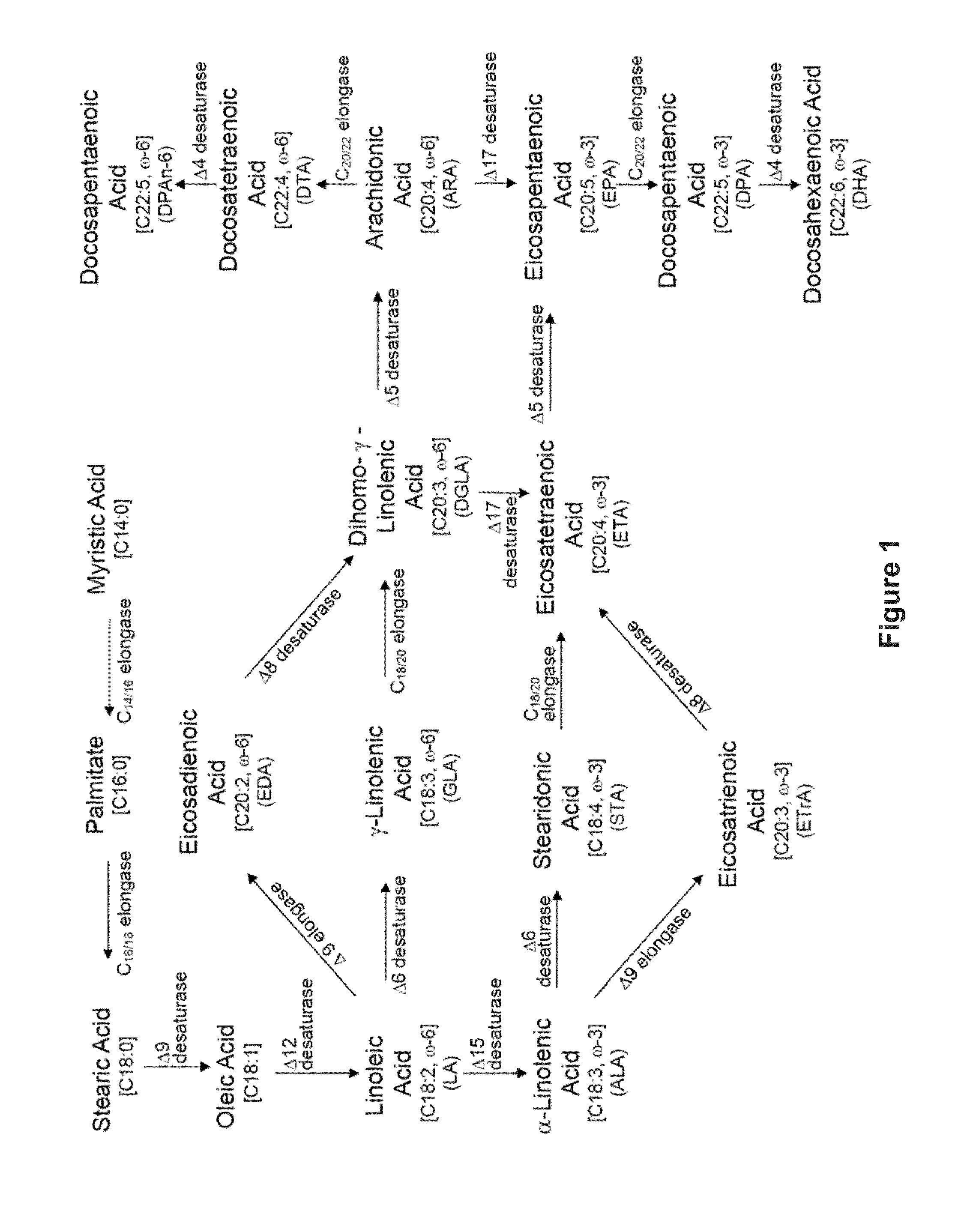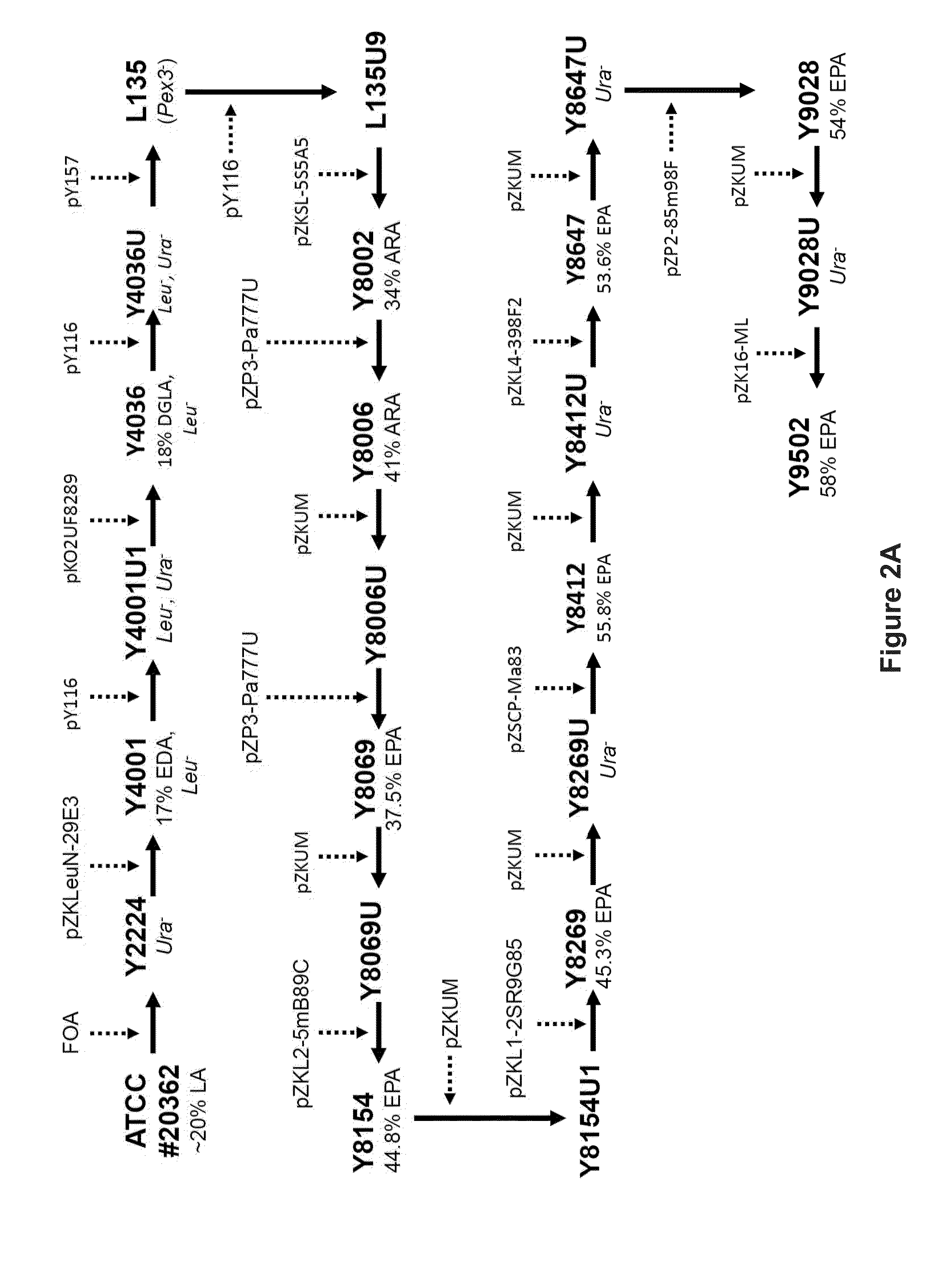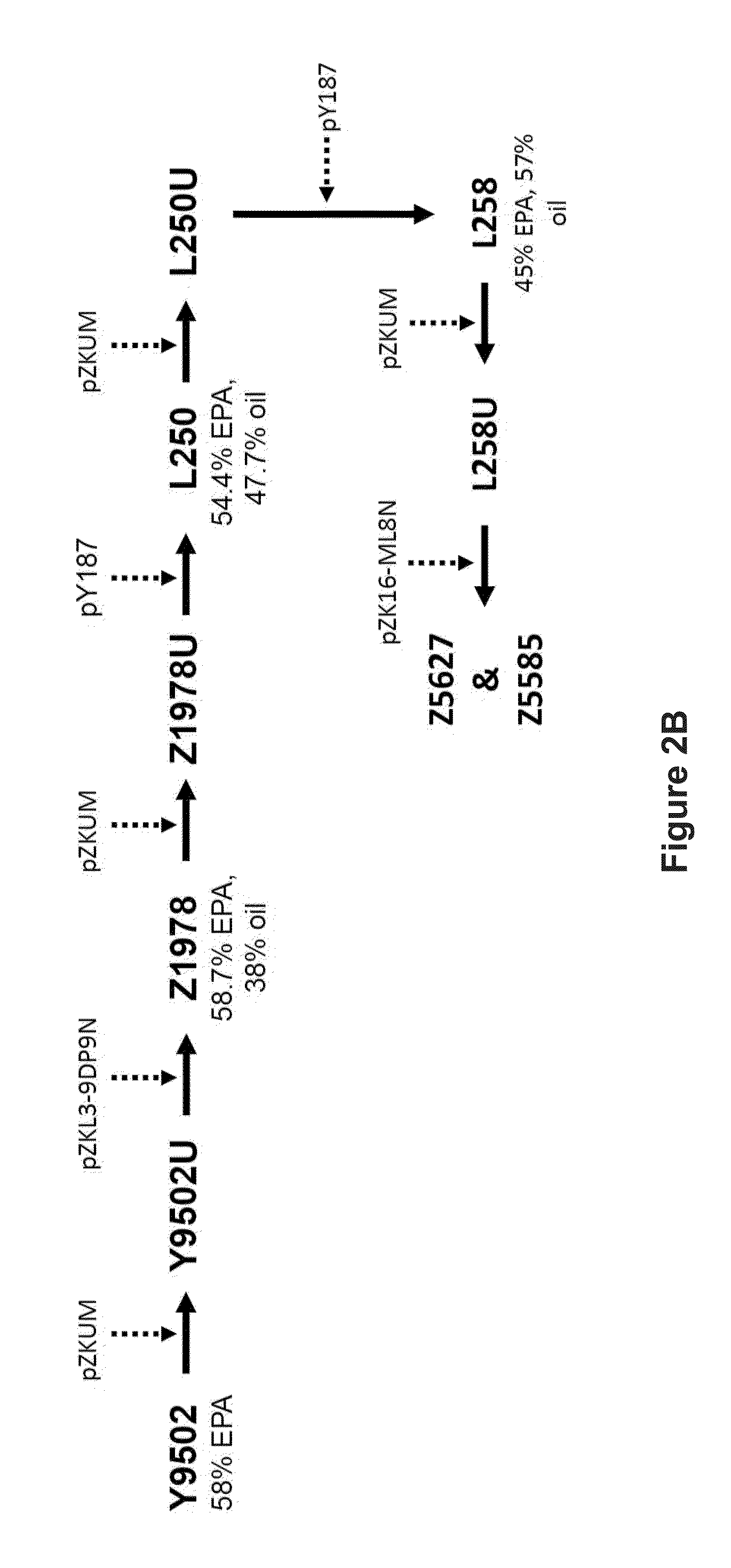Recombinant microbial cells that produce at least 28% eicosapentaenoic acid as dry cell weight
a technology of eicosapentaenoic acid and microbial cells, applied in the field of biotechnology, can solve the problems of limited information regarding the function of this protein, and achieve the effect of reducing the total amount of sugar alcohols
- Summary
- Abstract
- Description
- Claims
- Application Information
AI Technical Summary
Benefits of technology
Problems solved by technology
Method used
Image
Examples
example 1
Generation of Strain Z6109 Producing at Least about 51.7% EPA of Total Fatty Acids with at Least about 54.2% Total Lipid Content
[0219]This Example describes the generation of Y. lipolytica strain Z6109 through genetic modification of strain Z5627. The genetic modification entailed introducing an expression cassette encoding Arabidopsis thaliana caleosin-1 (AtClo1) into Z5627. FIG. 3A shows the modification steps and intermediate strain used for generating strain Z6109.
[0220]In order to introduce AtClo1 to Z5627, it was necessary to first render this strain to be Ura3− for subsequent selection purposes. Z5627 carries an intact URA3 coding sequence within the integrated plasmid construct pZKMP-ML9DCB, which was previously used to introduce sequences allowing for expression of MaLPAAT1S, YID9 and YICPT1 (see U.S. Pat. Appl. Publ. No. 2012-0052537). To disrupt the URA3 coding sequence of Z5627, construct pZKUM was used to integrate a Ura3− mutant sequence into the intact URA3 sequence. ...
example 2
Generation of Strain Z6903 Producing at Least about 51.4% EPA of Total Fatty Acids with at Least about 49.1% Total Lipid Content and Reduced Sugar Alcohol By-Products
[0230]This Example describes the generation of Y. lipolytica strain Z6903 through genetic modification of strain Z5585. The genetic modification entailed knocking out the endogenous Y. lipolytica gene SOU2, which encodes Sou2 sorbitol utilization protein. The genetic modification further entailed introducing expression cassettes encoding phospholipid:diacylglycerol acyltransferase (PDAT), delta-12 desaturase, and a DGLA synthase multizyme (delta-9 elongase fused to delta-8 desaturase). The development of strain Z6903 was required in order to develop strain Z9276, which is described below in Example 4.
[0231]FIG. 3B shows the modification steps and intermediate strains (Z5585U21 and Z5585K2U) used for generating strain Z6903. Strains Z5585U21 and Z5585K2U were generated as follows.
Generation of Strain Z5585U21
[0232]Constr...
example 3
Generation of Strain Z7418 Producing at Least about 49.8% EPA of Total Fatty Acids with at Least about 49.3% Total Lipid Content
[0251]This Example describes the generation of Y. lipolytica strain Z7418 through genetic modification of strain Z6903. The genetic modification entailed introducing expression cassettes encoding delta-8 desaturase, malonyl-CoA synthetase (MCS), and acyl-CoA:lysophosphatidic acid acyltransferase (LPAAT). The development of strain Z7418 was required in order to develop strain Z9276, which is described below in Example 4.
[0252]FIG. 3B shows the modification steps and intermediate strain (Z6903U) used for generating strain Z7418. Strain Z6903U was generated as follows.
Generation of Strain Z6903U
[0253]Construct pZKUM (above) was used to disrupt the URA3 gene in strain Z6903 that was introduced by the plasmid pZKADn-SyP298F (above). A total of eight 5-FOA-resistant transformants were grown and identified to possess a Ura− phenotype. Individual transformants were...
PUM
| Property | Measurement | Unit |
|---|---|---|
| weight | aaaaa | aaaaa |
| dry cell weight | aaaaa | aaaaa |
Abstract
Description
Claims
Application Information
 Login to View More
Login to View More - R&D
- Intellectual Property
- Life Sciences
- Materials
- Tech Scout
- Unparalleled Data Quality
- Higher Quality Content
- 60% Fewer Hallucinations
Browse by: Latest US Patents, China's latest patents, Technical Efficacy Thesaurus, Application Domain, Technology Topic, Popular Technical Reports.
© 2025 PatSnap. All rights reserved.Legal|Privacy policy|Modern Slavery Act Transparency Statement|Sitemap|About US| Contact US: help@patsnap.com



